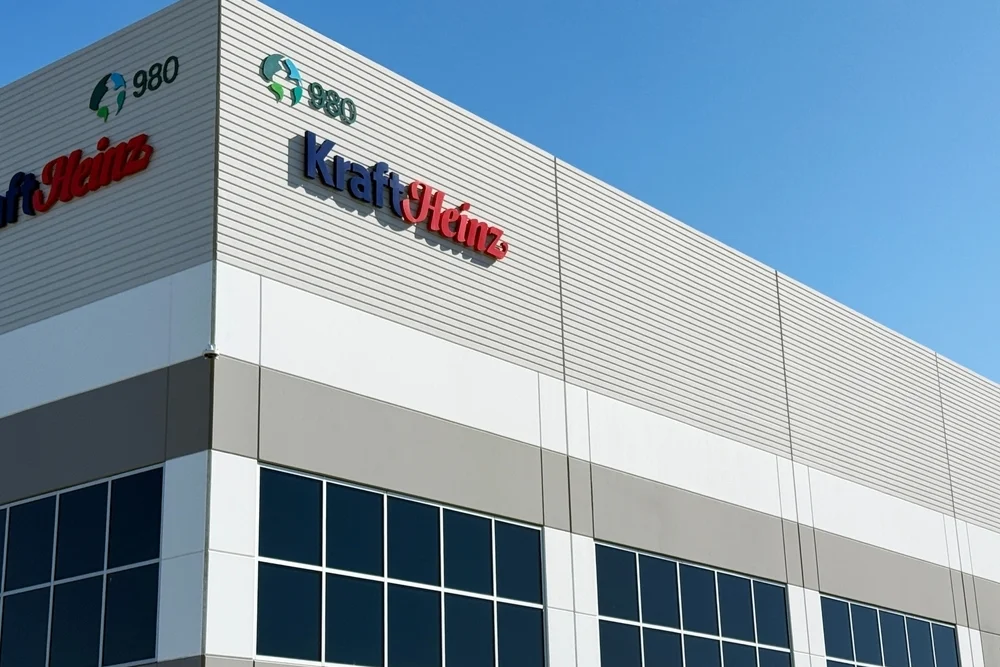Copyright Benzinga

At first glance, Kraft Heinz Company (NYSE:KHC) appears rather disastrous. As a consumer goods giant, it theoretically should be somewhat insulated from broader economic pressures; after all, people have to eat. Unfortunately, this underlying reality has not helped KHC stock, which is down more than 21% on a year-to-date basis. Nevertheless, a contrarian quantitative signal presents an informational arbitrage opportunity. It must be stated, though, that circumstances don't look auspicious at all for investors. Late last month, Kraft Heinz reported third-quarter adjusted earnings per share of 61 cents, beating analysts' consensus estimate of 58 cents. Unfortunately, the good news pretty much ended there, with quarterly sales of $6.237 billion falling short of the Street's view of $6.256 billion. What was particularly problematic was North America sales, which slumped 3.8% to $4.641 billion. Overall, volume/mix fell 3.5 percentage points on a year-over-year basis, with flagship products like coffee and cold cuts leading the weakness. Management also cited a challenging operating environment, adding to investor jitters. As such, the company trimmed its fiscal year 2025 adjusted EPS outlook to a range between $2.50 and $2.57 (down from a prior range between $2.51 and $2.67). This latest tally also sits below the $2.58 analyst consensus. Combined with expectations of net sales to decline between 3% and 3.5% (relative to prior guidance of down 1.5% through 3.5%) and KHC stock had nowhere to go but down. As expected, analysts are neutral on Kraft Heinz's prospects, with the consensus price target landing at $30.64. However, the spread between the lowest price target ($24) and the highest ($46) is about 92%. If the target dataset's center of mass is this expansive, it's a sign that fundamental analysis isn't a science; instead, it's a glorified opinion-generating platform. As I'm about to demonstrate, I believe we can reasonably dismiss what the analysts think, particularly in the realm of options trading. KHC Stock Hides A Potential Pricing Inefficiency Just like the current political environment, the options arena is cold and calculating. The market truly doesn't care about your feelings: you are either profitable or you are not. Because options expire, there's also a time element involved, further rendering fundamental analysis useless for trading derivatives. What's needed is a probabilistic model, which is where quantitative analysis comes into play. More than just an analysis of pricing behaviors, the quantitative approach calculates two types of probabilities: baseline and conditional. It's vital to understand what the odds are under a normal circumstance. Otherwise, when you make a decision, you don't have a counterfactual element to benchmark whether the move is rational or not. That's one of the critical flaws of fundamental analysis, along with its chart-reading cousin technical analysis. Both methodologies provide presumed opinion-based outcomes but they don't offer counterfactual evidence to determine the rationality of the move. Quantitative analysis, on the other hand, quantifies the rationale behind the decision; hence the name. Looking at KHC stock, we can determine through rise-over-run-style equations its forward 10-week median returns under baseline conditions. The distribution of outcomes forms a skewed curve, with prices ranging between $23.60 and $24.60 (assuming an anchor price of $24.27). Further, primary price clustering would be expected to occur at $24.20, with secondary clustering occurring at $23.90. However, we know through GARCH (Generalized Autoregressive Conditional Heteroskedasticity) studies that volatility diffuses in a clustered, non-linear manner. Borrowing from the principles of Newtonian mechanics, we may logically infer that different market stimuli yield different market behaviors. In the trailing 10 weeks, KHC stock is not structured in a baseline or homeostatic state but is rather arranged in a 2-8-D formation: two up weeks, eight down weeks, with an overall upward slope. Under this specific setup, the forward 10-week distributional curve would be expected to range between $23.60 and $28. Most importantly, price clustering would be expected to occur at around $26.30. Essentially, there's an 8.68% positive delta in price density dynamics that market makers are not expecting, offering a hidden informational arbitrage opportunity. A Top-Tier Idea Stands Out Armed with the above market intelligence, in my opinion, there's one idea that stands out like a fireworks display in the dead of night: the 25/26 bull call spread expiring Dec. 12. Basically, the transaction involves buying the $25 call and simultaneously selling the $26 call, for a net debit paid of $33 (the most that can be lost). If KHC stock rises through the second-leg strike ($26) at expiration, the maximum profit is $67, a payout of 203%. Breakeven lands at $25.33. Obviously, what makes this trade so compelling is that density dynamics point to $26.30 being the most likely median outcome stemming from the 2-8-D sequence. In many cases, the clustered price aligns with the breakeven threshold and you're left hoping for some luck to trigger the max payout. Here, the clustered price aligns with the second-leg strike, which is an incredibly alluring proposition. The drawback, though, is sample size. There are only seven instances of the 2-8-D sequence occurring on a rolling basis since January 2019 so there's a confidence interval problem. Still, keep in mind that heavily distributive sequences have historically led to robust upswings in KHC stock. I'm betting that a similar outcome could materialize at this juncture. The opinions and views expressed in this content are those of the individual author and do not necessarily reflect the views of Benzinga. Benzinga is not responsible for the accuracy or reliability of any information provided herein. This content is for informational purposes only and should not be misconstrued as investment advice or a recommendation to buy or sell any security. Readers are asked not to rely on the opinions or information herein, and encouraged to do their own due diligence before making investing decisions. Read More: Options Corner: Norwegian Cruise Line’s Post-Earnings Meltdown Hides an Arbitrage Opportunity Image: Shutterstock



